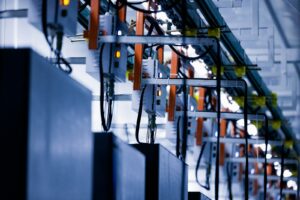New report details the most effective methods using existing tech and materials, and underlines business opportunities in acting now.
The 56-page report, Building value by decarbonizing the built environment has been produced by McKinsey Sustainability. The authors analysed more than 1,000 levers for reducing emissions, judging them by abatement potential, cost-effectiveness and scalability.
Every year, the built environment produces 14.4 metric gigatons of CO2 equivalent emissions globally. Some 26% of all greenhouse gas and 37% of combustion-related emissions come from construction and operation of the built environment. Without direct action, these levels are likely to rise.
The McKinsey report recommends global action to tackle this. But many of its recommendations can be implemented now at local and national level. These are practical tips to reduce emissions and save on bills. They also point the way for those working in or connected to the building industry.
‘Companies across the built-environment ecosystem could derive value immediately from these lower-emitting technologies and solutions,’ says the report. ‘Those that act now will likely be able to take advantage of powerful new business opportunities as global decarbonization gains traction.’
So, what are the best solutions?
The way we heat spaces and water currently produces about 75% of emissions from residential buildings and is an obvious target. The report says that heat pumps alone could reduce this by 60%.
But a combination of effective levers could reduce operational emissions by up to 90% and embedded emissions by up to 60%.
In one example, the report breaks down the ways a multifamily home – typical of many cities – could reduce 90% of operational emissions and see a return on investment, saving money overall. The solutions include: using heat pumps for heating and cooling; smart thermostats; high-efficiency appliances and insulation; induction cooking; and installing LED and smart lights.
Up to 100% of remaining space heating emissions could then be abated by heating multiple buildings with hot water from a central plant.
That covers homes. For large infrastructure projects, solutions include electrifying heavy equipment, using renewable gas and electricity as fuel. But the report also calls for industrialised production of green materials and changes to the way construction work is done – for example, with modular, off-site construction to increase efficiency and savings.
The report underlines the challenges of industrialisation, and of tackling the challenges presented on a global scale. Yet there’s plenty here to be getting on with now. The suggestion is that those who act soonest will reap the most benefits.
Photo by Scott Blake

















Leave a Reply